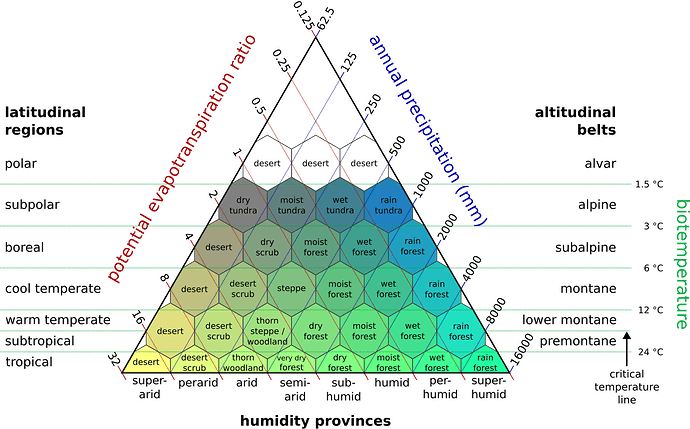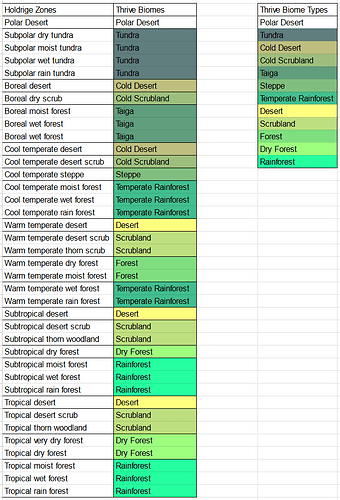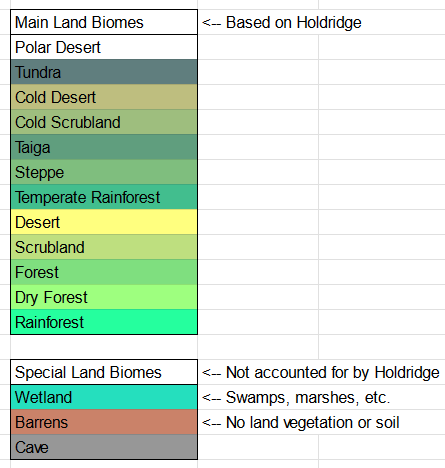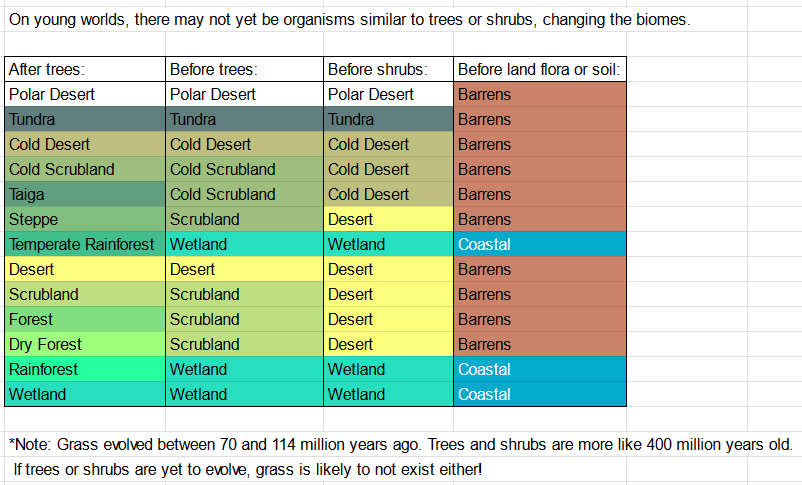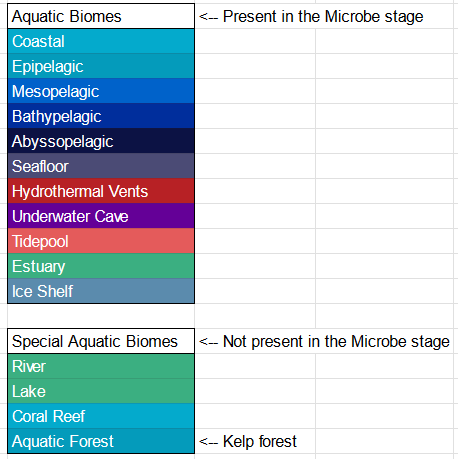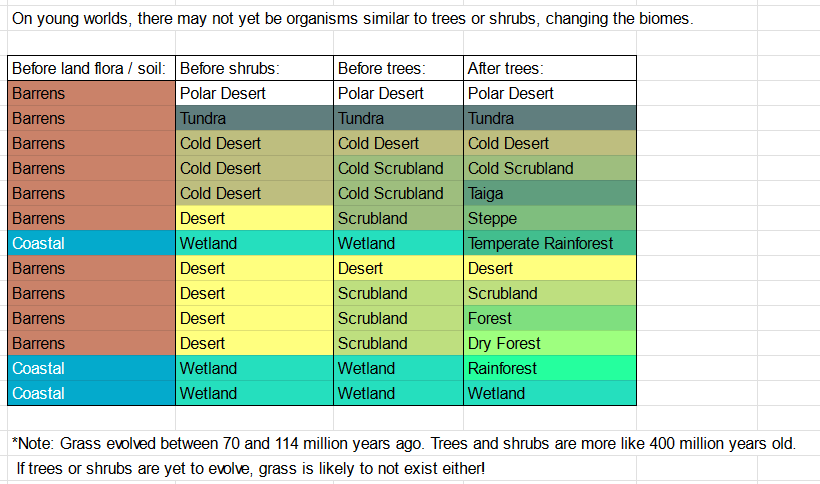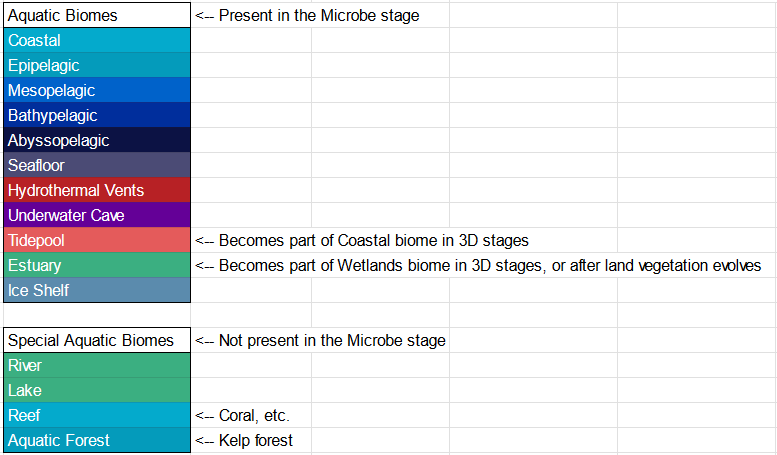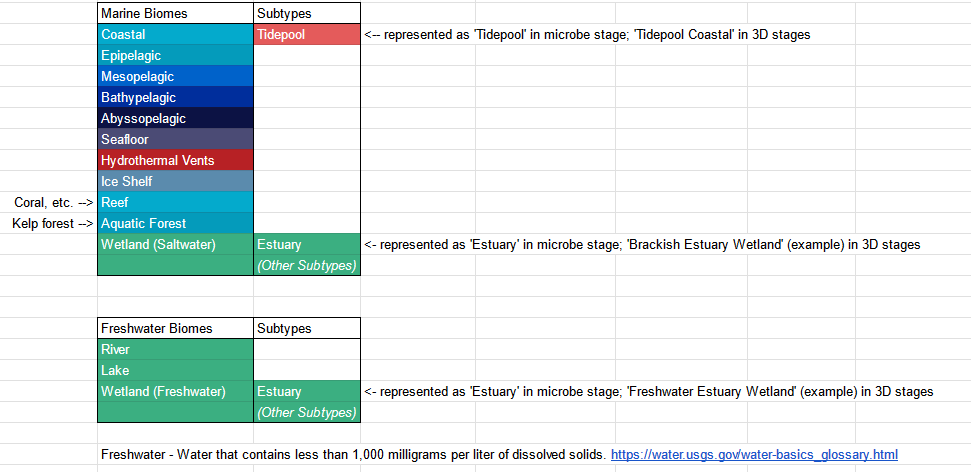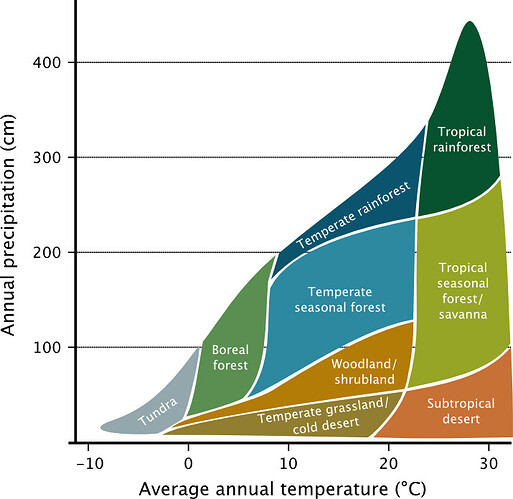I incorporated much of their feedback, and in my response talked about some other things such as tar pits as well. Here is my response, reposted to the dev forum for posterity:
This is some excellent feedback, thank you for your input!
First, my initial reasoning for having a ‘Special Land Biomes’ category is that some environments, like wetlands and caves, cannot be defined with humidity and temperature alone, but are also defined by their geography. You’re right that Wetlands are a transition zone between aquatic and land biomes, meanwhile caves aren’t on the surface at all, instead being totally unique spaces underground. With that said, I will admit that I don’t care too much for having a ‘Special’ category of biomes that don’t fit in the system, and I’ll integrate some of your proposed solutions at the end of this post.
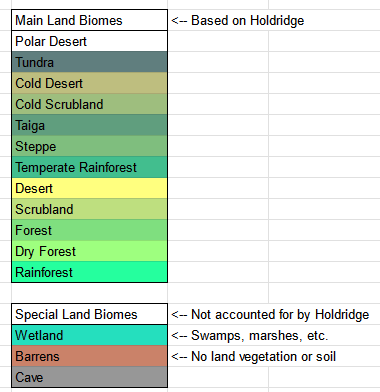
The ‘Special Aquatic Biomes’ category, now that I look at it again, doesn’t hold up to my original logic. This category is for aquatic biomes I added that aren’t in the microbe stage, but that division is totally arbitrary. I realize that we lack a way to quantify boundaries between aquatic biomes, with the exception of the -pelagic biomes which are defined by depth. If we define an ‘Aquatic Biome’ as a habitat dominated by liquid water, there is at a glance no reason for having two separate categories.
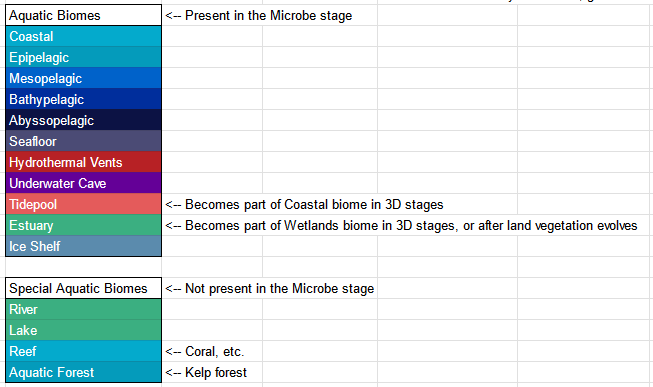
It seems that in the real world, aquatic biomes are usually divided broadly into ‘marine’ and ‘freshwater’ categories. I think this is a good place to begin. For a specific definition of ‘freshwater’, I am using this definition from USGS:
Freshwater - Water that contains less than 1,000 milligrams per liter of dissolved solids.
I am considering brackish (semi-salty) water to be saltwater. Ideally, we will track the salt content in each aquatic patch, just like moisture in land patches. 1,000 mg/L is roughly the same as 1,000 ppm, and ‘dissolved solids’ can be simplified to mean salt.
Based on all of this, we can divide the aquatic biomes as follows:
The Marine category includes saltwater biomes. The Tidepool patch (which to my understanding is different from Tidal Wetlands) is a subtype of the Coastal biome. When the player reaches the 3D stages, ‘Tidepool Coastal’ would be a Coastal patch with an abundance of tidepools, which at the scale of the 3D stages would be terrain generation features rather than entire patches. Things like tar pits (which harmonyjpetersen mentioned on the Dev forum) would also be terrain generation features, and perhaps could also constitute a biome subtype(s) if they are abundant enough.
I think Wetlands, though diverse, are still important enough and easy enough to define as a group (transition environment between water and land) that they should be a major biome type. As such, I’ve added Saltwater Wetland and Freshwater Wetland to their respective categories. Each will have subtypes based on the kinds of species present (woody vs. herbacious plants), the pH level, salinity, and so on, just like how terrestrial biomes will have subtypes based on moisture, temperature, native species, etc.
Based on Holdridge, a ‘Scrubland’ patch might be ‘Tropical Desert Scrubland’ or ‘Tropical Thorn Woodland’; based on our eventual system, a ‘Wetland’ patch might be a ‘Brackish Estuary Wetland’ or a ‘Seasonal Freshwater Floodplain’. As with land biome subtypes, I am leaving the specific numerical boundaries between wetland biome subtypes to be determined by more knowledgeable theorists and the people who will implement these biomes into the game, but this is a good start.
You may notice that the Underwater Cave biome is missing from the Aquatic categories. This is because I’ve removed the Special categories entirely, and made both the Cave and Underwater Cave biomes part of the new Subterranean category. Barrens, and all of the former land biomes, now belong to the Terrestrial category.
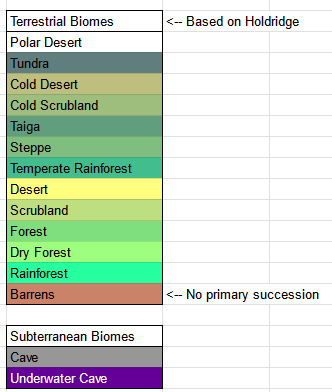
This means there are now four biome categories:
- Terrestrial
- Subterranean
- Marine
- Freshwater
I think this is altogether much more grounded approach to classification.
In review, from your suggestions:
I believe it would be better in Thrive to define them either A: in a separate category (Aquatic, Terrestrial, Wetlands, and Subterranean), or, better yet, as a set of modifier types.
I’ve incorporated your suggestion to make Subterranean its own category, as I think that makes sense. I’ve also renamed the Land category to Terrestrial. As for the aquatic biomes, I felt that Marine vs. Freshwater was a better major distinction than ‘Wetlands’ and ‘Aquatic’, because in real life it seems that’s the primary distinction people go with, and as you mention in your other suggestion, I believe that the various kinds of Wetlands work better as biome subtypes or modifiers.
Finally, since I’ve been throwing around words like ‘patch’ and ‘biome’ a lot, for my own sanity I’ve added a Definitions section at the top of the spreadsheet for all the important terms. The definitions themselves may need some work.
Here is the spreadsheet where you can view everything put together: Thrive Biomes - Google Sheets
